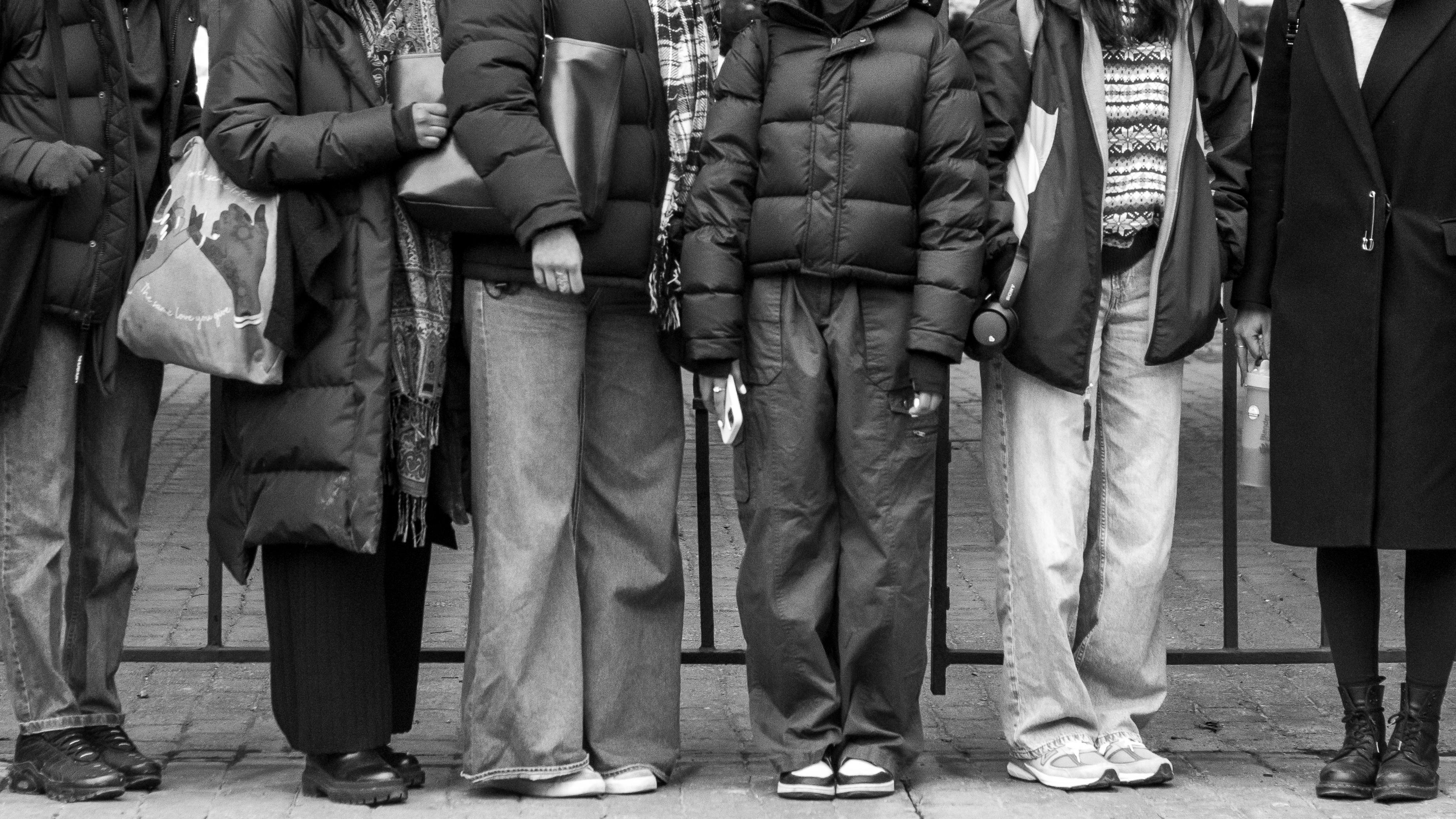By Zarmminaa Rehman
Trigger warning: mentions of anorexia and dieting
Claire Fitzpatrick was on a break during a lecture when her classmate began “joking” around. They made an insensitive comment at the expense of people with diabetes, which upset the third-year social work student, who is diagnosed with the condition.
When Fitzpatrick called out her classmate’s misinformed remark, she was stunned by the response.
When she told her peer not to make jokes about medical conditions, her classmate replied, “‘Oh but you don’t actually have diabetes [be]cause you’re thin,’” Fitzpatrick said.
Oftentimes, when the discussion of women’s bodies comes up, their physical appearance is the first thing to be noticed and scrutinized.
“They thought I wasn’t eating. It was really kind of traumatizing”
In society, there are often assumptions that misinterpret the relationship between a woman’s health and physical appearance. According to an article by The Atlantic, people have the tendency to associate certain body types with particular health conditions and negative characteristics. This tendency can be labeled as “weight stereotyping” which is the way people may judge others—especially women—on their physical appearance.
Some women at Toronto Metropolitan University (TMU) say they’ve been on the receiving end of inappropriate comments about their bodies, while others have been exposed to harmful beauty standards in the media. This can cause an unwanted relationship to fester between women and their bodies, as well as impose unrealistic standards of health and body image onto women at a young age.
At the time, Fitzpatrick found the situation to be absurd and funny but the more they thought about the incident, it became more unbelievable to them how someone could so easily make assumptions about others.
“It left kind of a bad taste in my mouth about the way people were talking about…their assumptions on people’s health based on their body,” Fitzpatrick says.
Though Fitzpatrick’s classmate made an ignorant comment, that situation can also be a reflection of how some medical conditions are portrayed in society. According to the Center for Disease Control and Prevention (CDC) in the U.S., there are three main classifications of diabetes: Type 1, Type 2 and gestational diabetes—which women during pregnancy may experience. Type 2 diabetes is linked with diet, weight and exercise, however, according to diaTribe Learn, a website that helps people understand more about diabetes, the stigma attached to the diagnosis of Type 2 diabetes generally shows that people who are overweight, obese or just generally bigger are more likely to be guilted for having the condition.
But weight-gain can be a common side effect of many circumstances, either directly or indirectly. Not all weight gain or weight loss has a single, one-size-fits-all explanation. According to a 2021 article in Healthgrades, an online resource for medical information, conditions such as hypothyroidism, where your thyroid—responsible for the hormone that regulates metabolism—is underactive or Polycystic Ovary Syndrome (PCOS)—where the ovaries produce aberrant levels of androgens, the male sex hormone—can be the reasons for fluctuating weight changes in women.
According to a 2022 article in Women’s Health, other reasons can include mental health disorders such as depression and anxiety, fluid retention, pregnancy, menopause, medication use, menstruation and an overactive thyroid.
Amanda Raffoul, who works at the Canadian Institutes of Health Research and is an instructor of paediatrics at Boston Children’s Hospital and Harvard Medical School, says the definitions of wellness and health change across different professional spectrums.
She says that one aspect that is uniform is that wellness and health encompass mental and social-well being, in addition to the physical health of your body.
Raffoul highlights the significance of the relationship between body image and body esteem. “It kind of boils down to the way you see and feel about your appearance and your body [as well as] how it moves and feels,” she says. “It can include your feelings, your perceptions, your experiences with weight, with height, with skin tone and colour.”
Sometimes in spaces that promote health and fitness, such as sporting environments, women may be subjected to uninvited comments about their appearance.
“Public health policies should not focus too much on…weight loss”
From around the ages of 10 to 12, second-year nutrition student Daniela Eshel participated in gymnastics. Due to her thin frame, people would approach her family during events to express concern about her body, saying she was “too skinny.”
“They thought I wasn’t eating. It was really kind of traumatizing, to just constantly be commented [on] how thin I looked.”
She remembers being confused as to why this was a topic people felt the need to talk about or why anyone considered it their business to comment on her appearance. When in reality, they knew absolutely nothing about her, Eshel says.
“I guess [those people] were thinking [then] that I was anorexic or something but I really wasn’t.”
Whenever these types of situations occurred, Eshel’s mother would usually be the one to shut them down. Some people even went as far as to suggest buying burgers to feed Eshel, she says. “I [would] be in shock but my mom would always just shut it down and tell [them] that’s not their space to say those things.”
Growing up in a positive home environment made Eshel feel secure enough that she didn’t need to change herself in order to love her body. Despite the comments strangers made about her appearance, Eshel says it didn’t drive her to avoid any events but rather to avoid situations where other people’s health and body were unnecessarily the main topic of discussion.
“I always just try to change the subject. I feel like…it shouldn’t be like a really main topic for people to converse [about].”
Edith Bernier is an author, consultant on the prevention of weight and size discrimination and founder of Grossophobie.ca, a Québécois website containing information, references and resources on fatphobia awareness. She says many women—whether they’re trans or cisgender—face increased policing on their physical appearances as compared to men.
“There has been more focus on the body of women and on establishing rules…and standards…that women should try to fit into,” Bernier says. “The way that you are expected to act and to behave and to look as a woman has been under security for a long time.”
To a certain degree, ideal body types can even be seen as fashionable trends that come and go like seasonal collections. Bernier says the acceptable physical appearance for women is ever-changing, becoming more prominent in the 1950s due to the birth of Playboy and televisation of beauty pageants.
“The centerfold models [of magazines] were getting thin[er] and thinner, same for Miss America women and then in contests,” she says.
In the fashion industry—and now the world of social media influencers—the ideal body and appearance for women is shaped by what they see in the media.
Bernier also says despite health and wellness accounts on social media, there are two sides to the content.
“Social media can be the best or the worst. It can…show candid examples of women…going through pregnancy and having stretch marks,” she says. “There are also lots and lots of accounts that are very into influencing within the traditional beauty standards…that are not necessarily the healthiest.”
For example, celebrity influencer and TV personality Kim Kardashian came under scrutiny in May of 2022 for boasting about her 16 pound weight loss in the span of three weeks to fit into her Met Gala dress.
Similarly, in the fashion industry of the early 90s, a new “ideal” body was amplified in the trend of “heroin chic” in which top models had the appearance of “pale skin, dark under-eye circles and having a thin, svelte figure.” The trend was harmful as the “look” was not only achieved through makeup but through use of heroin and other opioids which portrayed a glamorized version of heroin use in magazines and media.
“My body’s like a tool by which I navigate the world”
To achieve thin and “ideal” body types, other celebrities and influencers have been scrutinized for advertising weight loss products that promote weight loss, such as appetite suppressants and detox teas—to their followers.
The constant pressure for women to reduce their weight and have a “fit” body is exhausting and quite frankly, unattainable. Raffoul says for younger people, the media they consume may negatively impact how they feel about themselves. The constant influx of health content and messages about being thin or fit may cause one’s body esteem to decrease which impacts their body images.
“As a public health researcher…I’d love it if we could introduce more regulations on types of social media algorithms, that kind of push content to vulnerable young people,” Raffoul says.
“Public health policies should not focus too much on weight, weight loss or pushing for weight loss as a goal,” she says. “That can pressure people to engage in really harmful dieting behaviors.”
Fitzpatrick, who experienced disordered eating habits during high school, said they affected her relationship with her body and has since worked on improving how she views her appearance and chooses to self express herself.
For young women like Fitzpatrick and Eshel, it might take a while to shake off negative comments about their bodies and move forward. But while they’re taking healing steps, their journeys will be different as they try to become more confident in their bodies and grow their self-esteem.
“I’ve sort of worked through that to a place of body neutrality where my body is a tool by which I navigate the world but not my main thing about myself,” says Fitzpatrick.










Leave a Reply